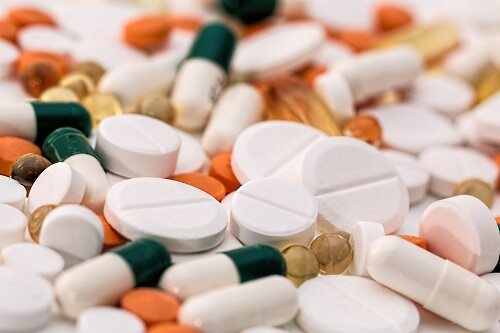When making a capsule pill, we need to know that not all powders can be casually filled into a capsule. It's not so easy to produce a pill. Here are some important factors need to be considered when designing a capsule pill.
(1) Compatibility with capsule shell: It should be confirmed that the drug had no interaction with the capsule shell. Since the capsule shell contains a water-soluble protein, the lysine residue therein easily crosslinks with the aldehyde species, resulting in the capsule not disintegrating.
(2) Moisture: Usually, the water content in the capsule shell is 13-16%. If the moisture permeability of the content is high enough, the capsule shell can be embrittled; otherwise, the capsule shell can be softened. For drugs with hygroscopicity, mannitol can be added as a diluent.
(3) Dosage: Low-dose drugs (less than 25mg) should be considered for content uniformity. For drugs with a dose exceeding 100 mg, the use of excipients is less. It should be determined whether the physical properties of the drug are compatible with the filled capsules; for drugs with a dose greater than 600 mg, it is generally difficult to fill the capsules. But if the particles are prepared, the filling requirements can be achieved by increasing the density.
(4) Solubility: The solubility of the drug is especially important for the design of the contents of the capsule. Water-soluble drugs are prone to disintegration and dissolution. For water-insoluble drugs, disintegrants and wetting agents should be added to meet the dissolution requirements.
(5) Particle size: The particle size of the drug has an influence on fluidity and dissolution. Too small a particle size will result in a decrease in fluidity and a large particle size may result in a decrease in dissolution. Therefore, the desired particle size is generally from 10 to 150 μm. The particle size of the excipient should be similar to the main drug.
(6) Adhesion: If the drug particles are easily adhered to each other, the fluidity may be lowered, and the difference in the amount of the contents may be increased. At this point, a glidant or a lubricant such as micronized silica gel or micronized silica gel/magnesium stearate may be added.
(7) Wettability: The wettability of a drug has an important influence on dissolution. For hydrophobic drugs, the addition of lactose improves its wettability. The addition of disintegrants (such as sodium carboxymethyl starch, crospovidone, etc.) can also be achieved. A lubricant such as magnesium stearate can reduce the wettability of the contents. At the same amount, increasing the mixing time of the lubricant with the material can result in a decrease in wettability.
(8) Sensitivity to humidity: For drugs that are prone to hydrolysis, moisture in the capsule shell can cause drug degradation. Mannitol can be added as a filler to increase the stability of the formulation.

Here also listes some medicines that are not suitable for capsules.


